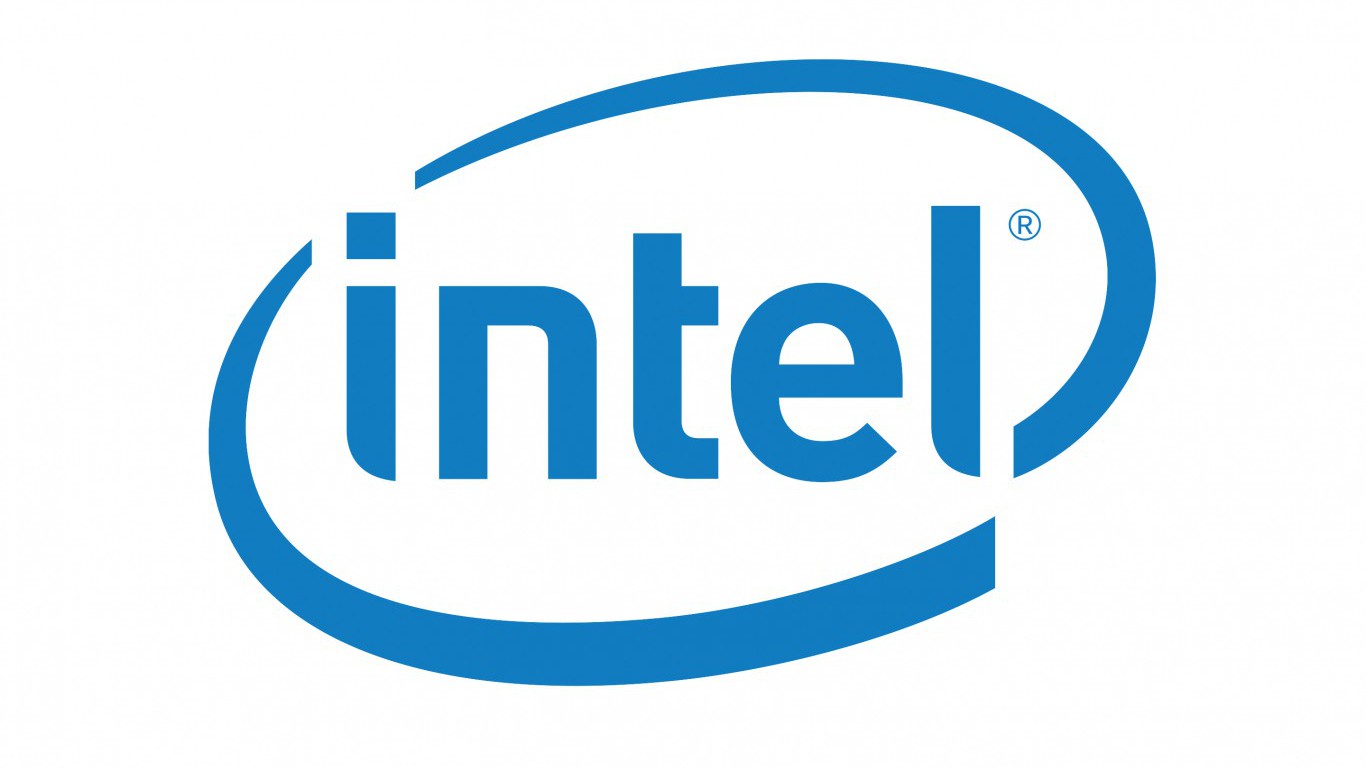Special Report
12 Companies Laying Off the Most Workers

Published:
Last Updated:

Tech giant Cisco Systems is expected to announce plans to lay off 14,000 employees in the coming weeks, nearly one-fifth of its total headcount, according to technology news site CRN. These layoffs may be the result of the company’s aim to move away from hardware and into wireless security and data centers.
If these layoffs are announced, they would not be the first by a major company this year, nor would they be the largest. According to data compiled by outplacement firm Challenger, Gray & Christmas, Wal-Mart has announced the most job cuts so far this year, with plans to lay off a total of 17,500 employees.
[in-text-ad]
In an interview with 24/7 Wall St., Challenger, Gray & Christmas CEO John Challenger explained that the number one cause of layoffs is poor financial performance. “Business drops, profitability drops, and [companies] have to cut costs. They don’t want to get caught with too many people and not enough business to support them.”
Click here to see the 12 companies laying off the most workers.
No industry has announced more job cuts in 2016 than the energy industry. U.S. oil currently trades at less than $50 a barrel, close to one-third of its price in 2008. Falling oil prices have weakened the industry in the U.S., and a number of companies have declared bankruptcy and closed refineries. The energy industry represents two of the four companies cutting the most jobs, with Halliburton and Schlumberger together cutting an estimated 25,000 jobs in 2016.
Layoffs do not always indicate poor financial performance. Many companies laying off employees are restructuring as they adapt to a changing marketplace. Over the past decade, the growing ubiquity of mobile technology and cloud computing has disrupted industries most consumer-facing industries, as well as a large share of the country’s biggest tech companies. The computer and retail industries have announced 49,464 and 43,618 job cuts, respectively this year, the second and third most of any industry.
As Challenger told 24/7 Wall St., “[Job] cuts in retail are signs of the fundamental change going on in the move to e-commerce.” Online retail sales accounted for 8.1% of total retail sales in the most recent fiscal quarter, roughly double the share seven years ago. As major retailers shift their focus to online sales, many employees at brick-and-mortar stores are at greater risk of losing their jobs. Macy’s is currently laying off three to four workers in each of its 770 stores, and has plans to close 100 locations in early 2017.
The technology industry is also undergoing major changes. Global PC shipments declined by 5.2% in the most recent quarter, the sixth consecutive quarter of decline. Meanwhile, smartphone sales have continued to grow. To keep up with shifting consumer demand, major technology companies are expanding their product lines and restructuring in the process. For example, hard drive manufacturer Seagate Technology recently acquired cloud storage company Dot Hill Systems in an attempt to diversity its business offerings. As part of a plan to restructure around the merger, Seagate recently announced it would be laying off a total of 8,100 employees by the end of 2017.
Challenger, Gray & Christmas provided 24/7 Wall St. with all job cut announcements affecting at least 1,000 positions in 2016. 24/7 Wall St. combined the planned cuts by company to identify the companies that announced the most job cuts so far this year. Only announcements made in 2016 were considered, and layoffs were only counted if they occurred at least partially in 2016, or are expected to occur in the future. Job cuts announced in 2016 but which only included positions cut in 2015 were excluded from the list. Job cuts did not need to be entirely within the United States. Total headcounts are from each company’s most recent annual report filed with the Securities and Exchange Commission.
These are the 14 companies cutting the most jobs.
12. Macy’s (NYSE: M)
> Job cuts: 4,350
> Number of employees: 157,900
> 1-yr. share price change: -35.35%
Macy’s announced earlier this year it would be laying off an average of three to four sales associates in each of its 770 stores, which amounts to roughly 3,000 employees nationwide. The retailer will also be laying off approximately 600 back-office employees, 750 customer service representatives, and offering buyouts to approximately 165 senior executives.
Macy’s is one of many brick-and-mortar stores losing ground to Amazon and other online retailers. The company reported a 5.7% decline in comparable sales in the first half of 2016 compared to the year before, and the stock price has lost more than a third of its value in the past 52 weeks. Macy’s, which closed 41 stores last year, announced on August 11 it would be closing 100 additional stores in early 2017.
[in-text-ad]

11. Hancock Fabrics
> Job cuts: 4,500
> Number of employees: 4,500
> 1-yr. share price change: N/A
Brick-and-mortar stores continue to struggle and lose ground to online retail, and Hancock Fabrics, a wholesale fabric store with roughly 250 U.S. locations, is one of the latest victims. Even before the recent troubles, the company was no stranger to financial difficulties, having entered bankruptcy in 2007 and emerging in 2008. After reporting $21 million in operating losses and $110 million in debt, the company again filed for bankruptcy protection in February. At the time, the company planned on only shuttering 70 of its roughly 250 locations. However, when Hancock Fabrics failed to sell its remaining assets to a company that would keep its stores operational, it opted to close all locations and cease operations in April. The closures will result in approximately 4,500 job losses nationwide.

10. Microsoft (NASDAQ: MSFT)
> Job cuts: 4,700
> Number of employees: 114,000
> 1-yr. share price change: +21.77%
Rapid developments in technology and changing consumer demand — especially from PC-based technology to mobile — are sending shockwaves through the tech industry. Emphasis has been steadily shifting from personal computer hardware development and manufacturing to mobile computing and cloud storage, spurring massive restructuring in companies across the industry.
In an attempt to adapt to the changing marketplace, Microsoft acquired in April 2014 the devices and services business of mobile phone company Nokia. However, the newly acquired mobile business has been underperforming, and last year the company announced 7,800 layoffs, primarily in its mobile division. This June, Microsoft announced additional 4,700 job cuts by the end of fiscal year 2017.

9. National Oilwell Varco Inc. (NYSE: NOV)
> Job cuts: 6,000
> Number of employees: 50,197
> 1-yr. share price change: -11.98%
U.S. oil currently trades at less than $50 a barrel, down from nearly $150 a barrel peak price in 2008. The drop in oil prices has weakened the American oil industry and has led to the loss of nearly half of all industry jobs in the United States. Oilfield services and drilling equipment provider National Oilwell Varco contributed to these job losses, shedding 13,445 employees in 2015. The job losses continued into this year, as the company recently announced it cut 6,000 positions in the first quarter. In addition to the layoffs, National Oilwell Varco announced plans to close 200 facilities. While it is downsizing roughly one-third of its workforce, the company still fares better than numerous other oil drillers that have gone bankrupt as a result of the fall in oil prices.
[in-text-ad]

8. DuPont Pioneer (NYSE: DD)
> Job cuts: 6,000
> Number of employees: 52,000
> 1-yr. share price change: 25.35%
Chemical manufacturing giants DuPont and Dow Chemical announced in late 2015 their intention to merge into a single corporate entity. Along with the proposed merger, DuPont announced plans to reduce costs by $700 million in 2016, eliminating as many as 6,000 jobs. While the deal with Dow Chemical likely spurred the mass layoffs, DuPont has been reducing its headcount for years. At the end of 2015, DuPont employed 52,000 people, down from 61,000 in 2011.
DuPont-Dow will likely continue cutting jobs into 2017 as company executives anticipate up to $3 billion in savings from cutting overlapping jobs and facilities when the merger is complete.

7. Weatherford International Ltd. (NYSE: WFT)
> Job cuts: 8,000
> Number of employees: 39,500
> 1-yr. share price change: -39.96%
U.S. oil prices are currently below $50 a barrel, down from a decade high of nearly $150 a barrel in 2008. The precipitous drop in oil prices has had, and continues to have, severe implications for energy companies. With many companies declaring bankruptcy, employment in the U.S. oil industry has been cut in half — the industry shed roughly 250,000 jobs. Many industry leaders predict prices will not return to $100 a barrel for several years. As a result, some energy companies continue to announce massive layoffs.
Weatherford International, an oil and natural gas extraction technology company, is laying off a substantial share of its employees. Though at the beginning of the year the company announced 6,000 planned layoffs in 2016, the number increased to 8,000 by the end of the second quarter. The company expects to save $446 million annually as a result of the workforce reduction.

6. Bank of America (NYSE: BAC)
> Job cuts: 8,000
> Number of employees: 213,000
> 1-yr. share price change: -14.52%
As online banking continues to gain popularity and consumers use mobile devices and computers to transfer funds and cash checks more and more, employees at brick-and-mortar banks are increasingly likely to be on the chopping block. Since 2009, Bank of America has reduced its consumer division from more than 100,000 employees to 68,400 as of the first quarter of 2016. The company’s president of retail banking and co-head of consumer banking said in June the employee count for the bank’s retail financial centers will likely soon drop “to the low 60s.” Last year, the banking giant laid off roughly 10,000 employees in total, and it may approach that number this year as well.
[in-text-ad]

5. Seagate Technology (NASDAQ: STX)
> Job cuts: 8,100
> Number of employees: 45,500
> 1-yr. share price change: -38.11%
Data storage manufacturer Seagate Technology announced earlier this summer it would lay off approximately 8,100 employees as part of a restructuring effort that will take place in fiscal 2017. Seagate manufactures data storage drives, and its restructuring plan is partially the result of an attempt by the company to diversify its business offerings in the face of a shrinking PC market. As part of the company’s diversification and subsequent restructuring, Seagate acquired cloud storage company Dot Hill Systems in August 2015.
According to industry research firm Gartner, global PC shipments in the second quarter of 2016 were 5.2% less than in the year before, the sixth consecutive quarter of decline. Seagate reported a 19% year-over-year decline in revenue in 2016, and its stock price is trading at less than two-thirds of its value 52 weeks ago.

4. Schlumberger Ltd. (NYSE: SLB)
> Job cuts: 10,000
> Number of employees: 95,000
> 1-yr. share price change: -1.89%
The 70% plunge in oil prices since June 2014 has drastically impacted the industry. Oilfield services giant Schlumberger Ltd. has faced financial challenges since the precipitous oil price drop, posting a billion dollar loss in the fourth quarter of 2015. Over the 14 months starting in November 2014, the company eliminated some 24,000 jobs. In January 2016, the company announced its intention to cut an additional 10,000 jobs.
Unlike other companies rapidly shedding jobs, Schlumberger CEO Paal Kibsgaard has taken a pay cut in each of the last three years. Kibsgaard’s total compensation dropped from $22.8 million in 2013 to $18.3 million in 2015.

3. Intel (NASDAQ: INTC)
> Job cuts: 12,000
> Number of employees: 107,300
> 1-yr. share price change: 21.08%
A shift in consumer demand from personal computers to cloud storage and mobile devices is sending shockwaves through the technology sector. Personal computer processing chip manufacturer Intel announced plans to reduce its workforce by 11%, or roughly 12,000 employees, earlier this year.
The company’s most recent quarterly operating income of $1.3 billion is less than half what it was the year before. While the recently announced layoffs demonstrate the company’s need to cut costs, year-over-year increases in CEO Brian Krzanich’s compensation tell a different story. Krzanich’s total compensation rose from $9.6 million in 2013 to $14.6 million in 2015.
[in-text-ad]

2. Halliburton (NYSE: HAL)
> Job cuts: 15,200
> Number of employees: 65,000
> 1-yr. share price change: 9.1%
Much-maligned energy services contractor Halliburton reduced its staff from about 80,000 at the end of 2014 to 65,000 at the end of last year. As oil prices continue to linger near decade lows and the energy industry continues to struggle, Halliburton has made several substantial job cuts this year. After disclosing its most recent job cut of 5,000 employees, the company’s headcount is now down to 50,000.
As evidence of the company’s struggles, Halliburton reported a net loss of more than $667 million in 2015, a stark contrast to the $3.5 billion in net profits it reported the year before.

1. Wal-Mart Stores Inc. (NYSE: WMT)
> Job cuts: 17,500
> Number of employees: 2.3 million
> 1-yr. share price change: 1.36%
Retail giant Wal-Mart announced this year several structural changes that will result in roughly 17,500 layoffs. The company announced in mid-January its intention to close 154 U.S. stores and another 115 stores outside of the United States. Walmart Express, the company’s smallest format store, will make up the majority of American store closures. Outside of the United States, the majority of store closures will be in Brazil.
In addition the jobs eliminated through store closings, Wal-Mart announced the elimination of in-store bookkeeping and accounting jobs in hundreds of store locations. In an effort to improve efficiency, those jobs will be replaced by money counting machines and the invoicing department in the company’s Arkansas headquarters.
Take Charge of Your Retirement: Find the Right Financial Advisor For You in Minutes (Sponsor)
Retirement planning doesn’t have to feel overwhelming. The key is finding professional guidance—and we’ve made it easier than ever for you to connect with the right financial advisor for your unique needs.
Here’s how it works:
1️ Answer a Few Simple Questions
Tell us a bit about your goals and preferences—it only takes a few minutes!
2️ Get Your Top Advisor Matches
This tool matches you with qualified advisors who specialize in helping people like you achieve financial success.
3️ Choose Your Best Fit
Review their profiles, schedule an introductory meeting, and select the advisor who feels right for you.
Why wait? Start building the retirement you’ve always dreamed of. Click here to get started today!
Thank you for reading! Have some feedback for us?
Contact the 24/7 Wall St. editorial team.